Abstract
OBJECTIVES: This study examined the role of decision latitude and job strain in the etiology of a first myocardial infarction. METHODS: Eligible case patients were all full-time working men 45 to 64 years of age who suffered a first myocardial infarction during the period January 1992 to January 1993 in the greater Stockholm region. Referents were selected from the general population. Participation rates were 82% (case patients) and 75% (referents). RESULTS: Both inferred and self-reported low decision latitude were associated with increased risk of a first myocardial infarction, although this association was weakened after adjustment for social class. A decrease in inferred decision latitude during the 10 years preceding the myocardial infarction was associated with increased risk after all adjustments, including chest pain and social class. The combination of high self-reported demands and low self-reported decision latitude was an independent predictor of risk after all adjustments. CONCLUSIONS: Both negative change in inferred decision latitude and self-reported job strain are important risk indicators in men less than 55 years of age and in blue-collar workers.
Full text
PDF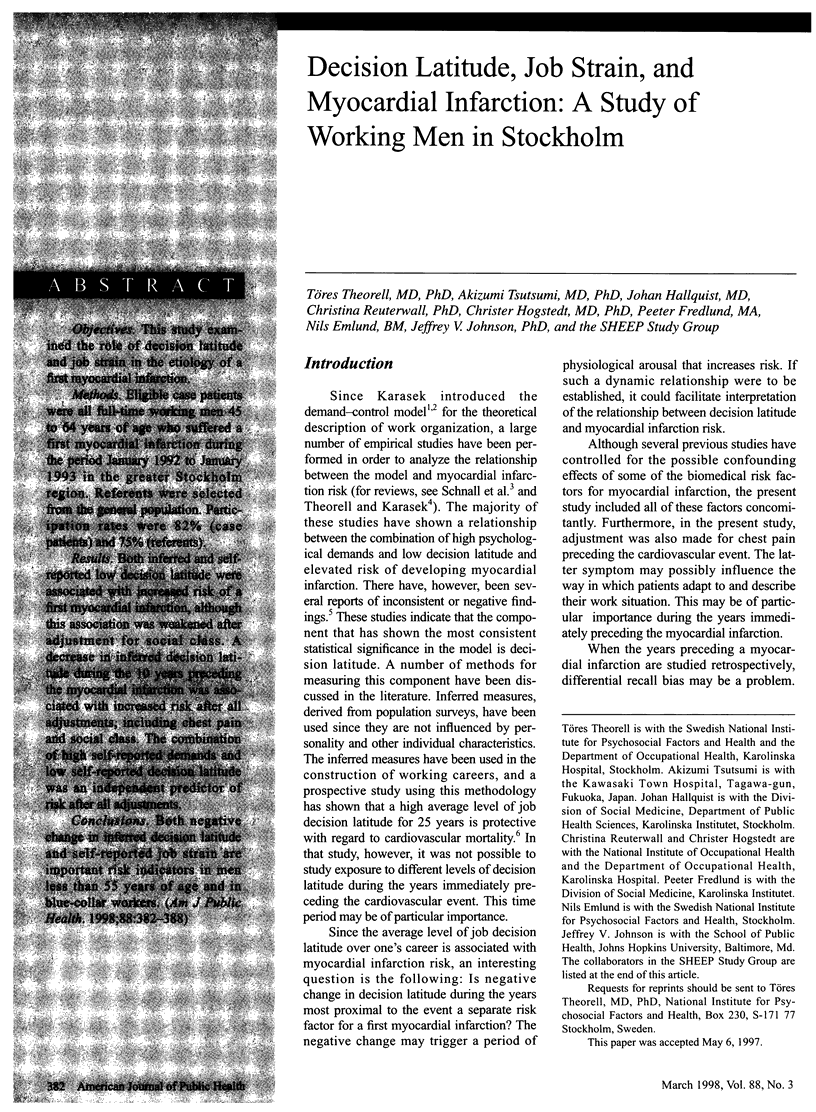
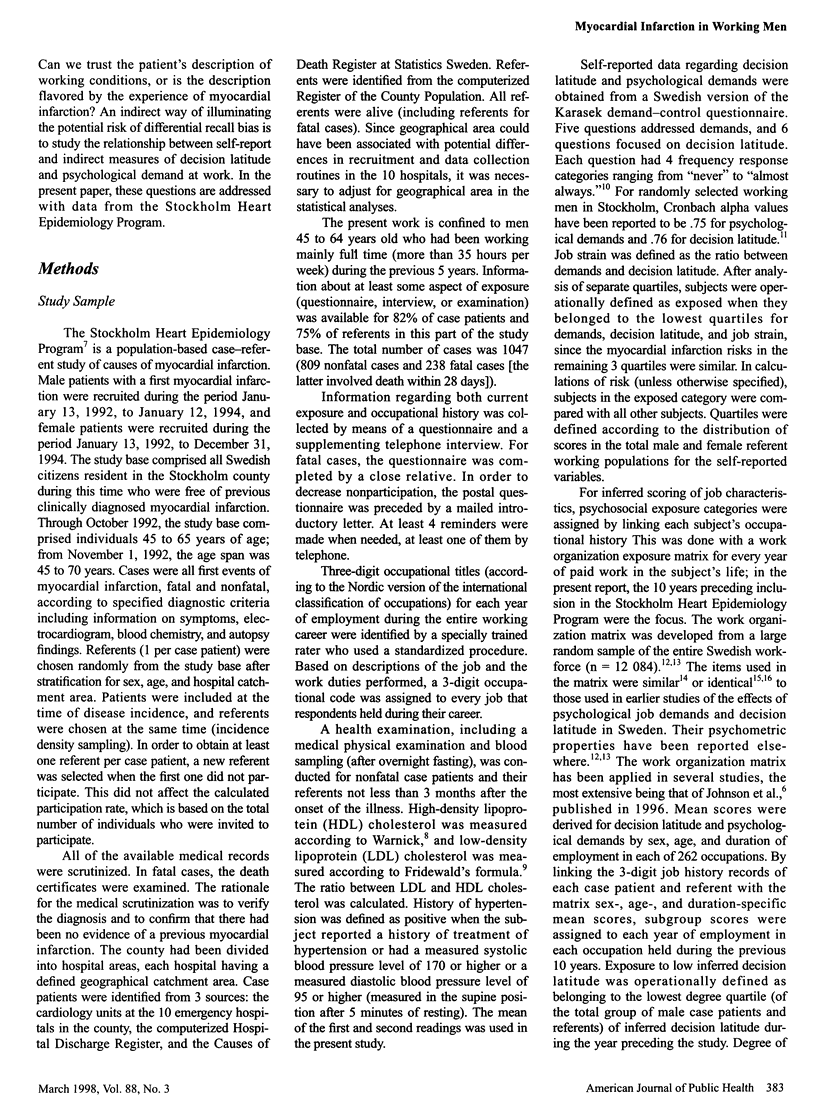
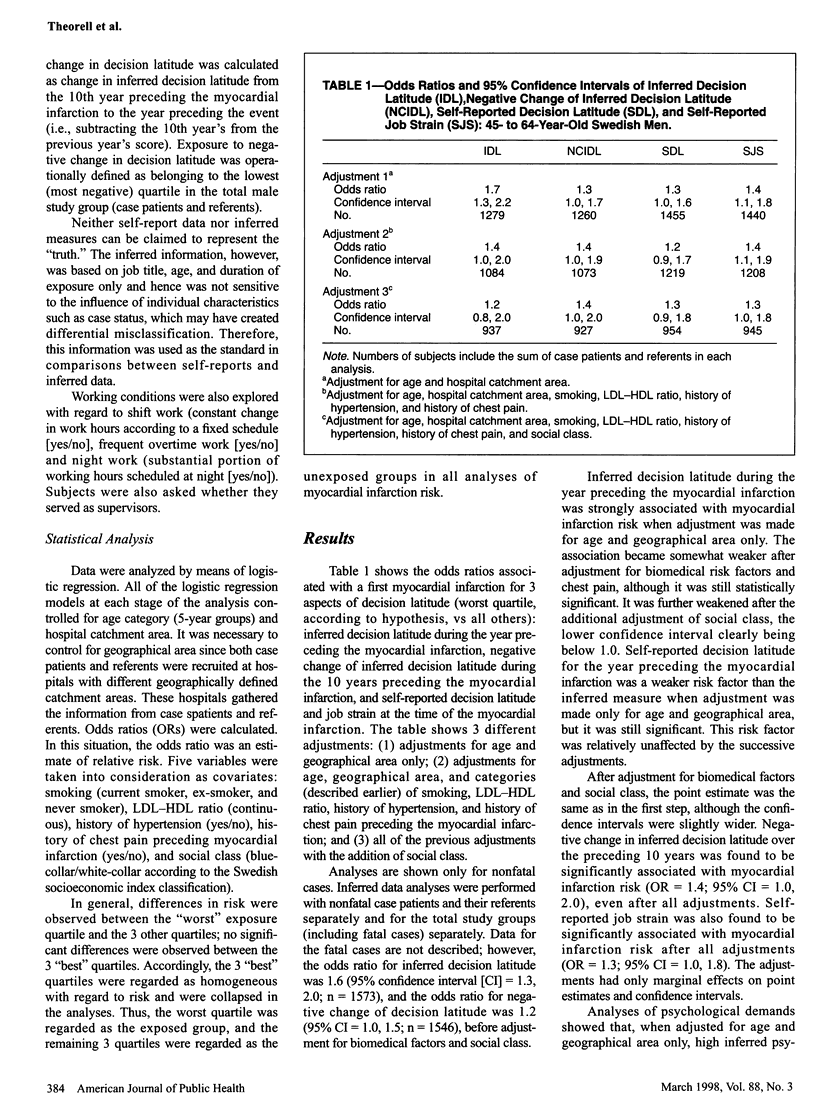
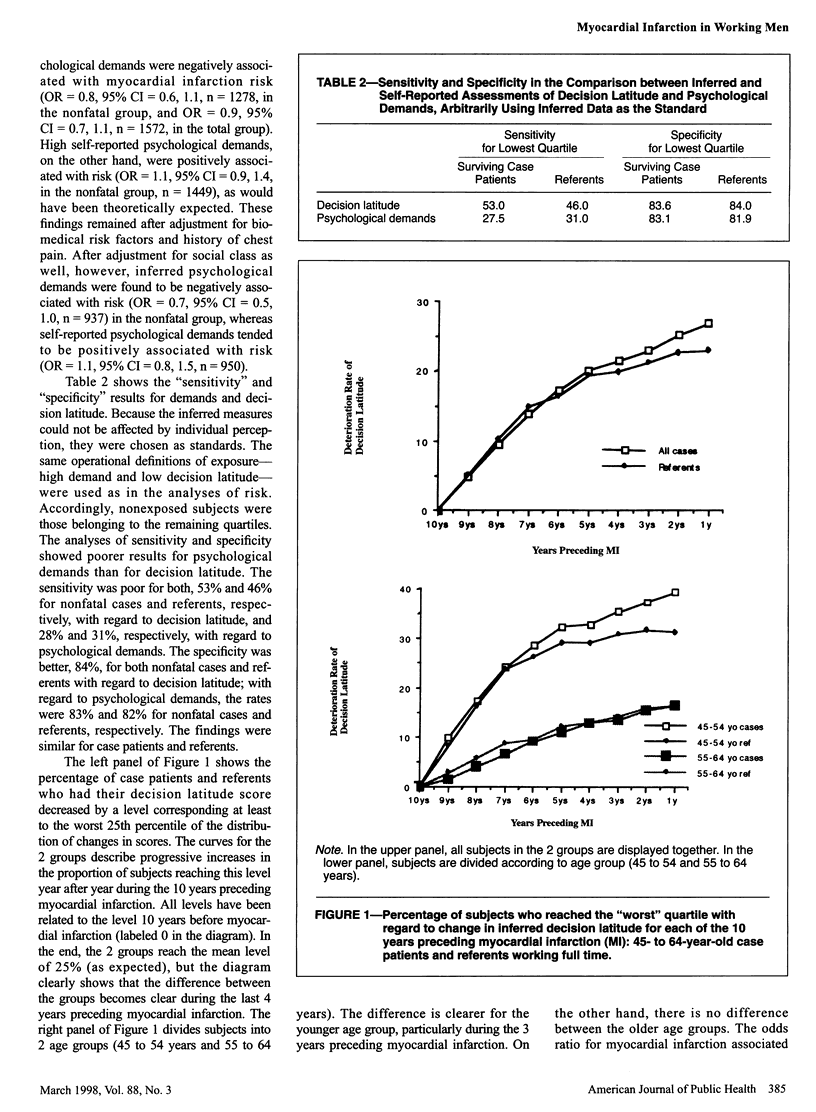
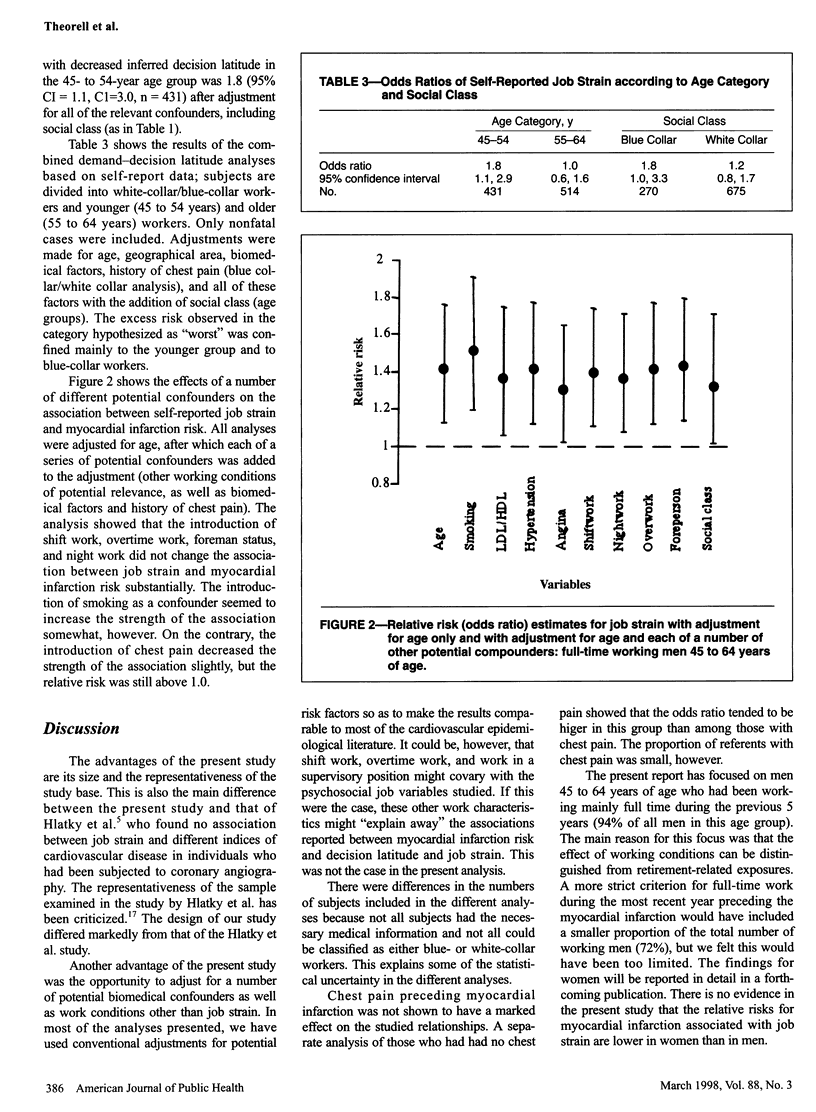
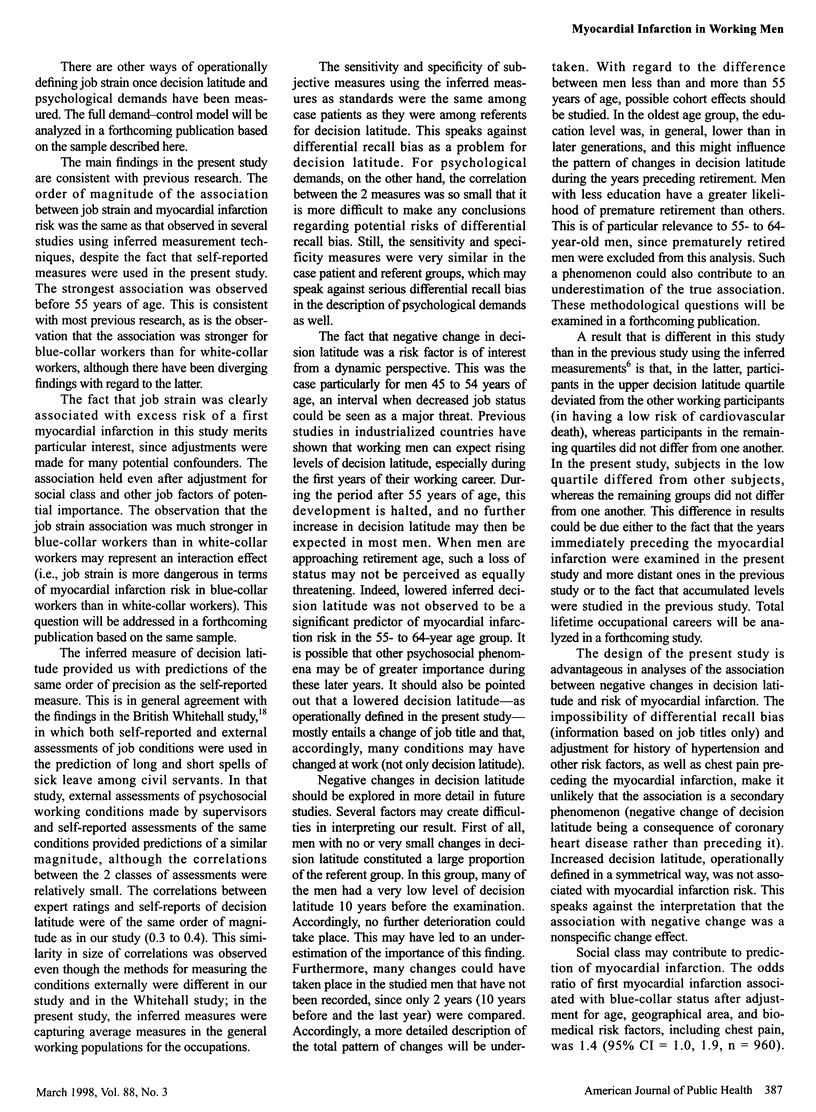
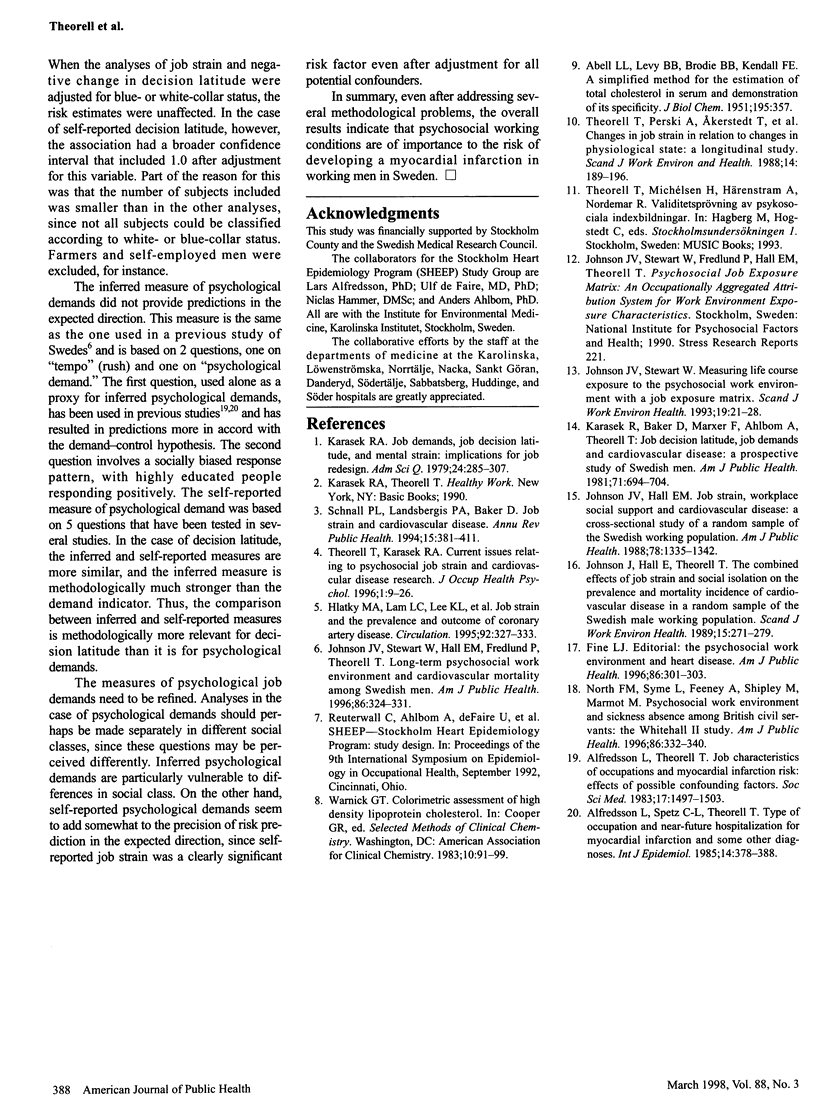
Selected References
These references are in PubMed. This may not be the complete list of references from this article.
- Alfredsson L., Spetz C. L., Theorell T. Type of occupation and near-future hospitalization for myocardial infarction and some other diagnoses. Int J Epidemiol. 1985 Sep;14(3):378–388. doi: 10.1093/ije/14.3.378. [DOI] [PubMed] [Google Scholar]
- Alfredsson L., Theorell T. Job characteristics of occupations and myocardial infarction risk:effect of possible confounding factors. Soc Sci Med. 1983;17(20):1497–1503. doi: 10.1016/0277-9536(83)90094-1. [DOI] [PubMed] [Google Scholar]
- Fine L. J. The psychosocial work environment and heart disease. Am J Public Health. 1996 Mar;86(3):301–303. doi: 10.2105/ajph.86.3.301. [DOI] [PMC free article] [PubMed] [Google Scholar]
- Hlatky M. A., Lam L. C., Lee K. L., Clapp-Channing N. E., Williams R. B., Pryor D. B., Califf R. M., Mark D. B. Job strain and the prevalence and outcome of coronary artery disease. Circulation. 1995 Aug 1;92(3):327–333. doi: 10.1161/01.cir.92.3.327. [DOI] [PubMed] [Google Scholar]
- Johnson J. V., Hall E. M. Job strain, work place social support, and cardiovascular disease: a cross-sectional study of a random sample of the Swedish working population. Am J Public Health. 1988 Oct;78(10):1336–1342. doi: 10.2105/ajph.78.10.1336. [DOI] [PMC free article] [PubMed] [Google Scholar]
- Johnson J. V., Hall E. M., Theorell T. Combined effects of job strain and social isolation on cardiovascular disease morbidity and mortality in a random sample of the Swedish male working population. Scand J Work Environ Health. 1989 Aug;15(4):271–279. doi: 10.5271/sjweh.1852. [DOI] [PubMed] [Google Scholar]
- Johnson J. V., Stewart W. F. Measuring work organization exposure over the life course with a job-exposure matrix. Scand J Work Environ Health. 1993 Feb;19(1):21–28. doi: 10.5271/sjweh.1508. [DOI] [PubMed] [Google Scholar]
- Johnson J. V., Stewart W., Hall E. M., Fredlund P., Theorell T. Long-term psychosocial work environment and cardiovascular mortality among Swedish men. Am J Public Health. 1996 Mar;86(3):324–331. doi: 10.2105/ajph.86.3.324. [DOI] [PMC free article] [PubMed] [Google Scholar]
- Karasek R., Baker D., Marxer F., Ahlbom A., Theorell T. Job decision latitude, job demands, and cardiovascular disease: a prospective study of Swedish men. Am J Public Health. 1981 Jul;71(7):694–705. doi: 10.2105/ajph.71.7.694. [DOI] [PMC free article] [PubMed] [Google Scholar]
- North F. M., Syme S. L., Feeney A., Shipley M., Marmot M. Psychosocial work environment and sickness absence among British civil servants: the Whitehall II study. Am J Public Health. 1996 Mar;86(3):332–340. doi: 10.2105/ajph.86.3.332. [DOI] [PMC free article] [PubMed] [Google Scholar]
- Schnall P. L., Landsbergis P. A., Baker D. Job strain and cardiovascular disease. Annu Rev Public Health. 1994;15:381–411. doi: 10.1146/annurev.pu.15.050194.002121. [DOI] [PubMed] [Google Scholar]
- Theorell T., Karasek R. A. Current issues relating to psychosocial job strain and cardiovascular disease research. J Occup Health Psychol. 1996 Jan;1(1):9–26. doi: 10.1037//1076-8998.1.1.9. [DOI] [PubMed] [Google Scholar]
- Theorell T., Perski A., Akerstedt T., Sigala F., Ahlberg-Hultén G., Svensson J., Eneroth P. Changes in job strain in relation to changes in physiological state. A longitudinal study. Scand J Work Environ Health. 1988 Jun;14(3):189–196. doi: 10.5271/sjweh.1932. [DOI] [PubMed] [Google Scholar]


